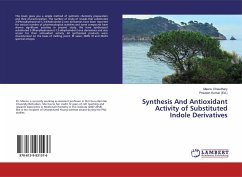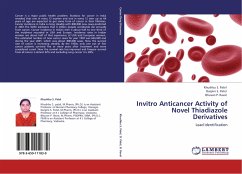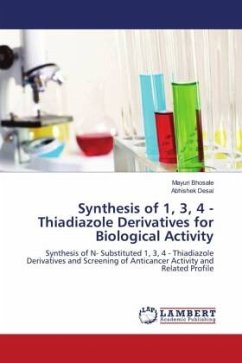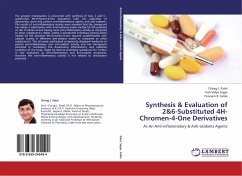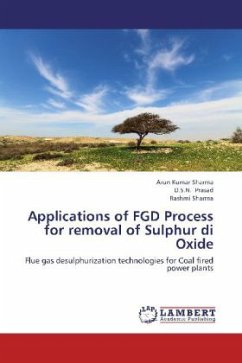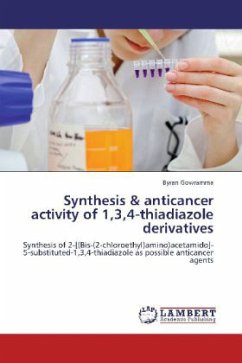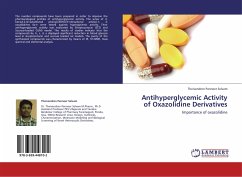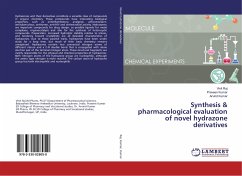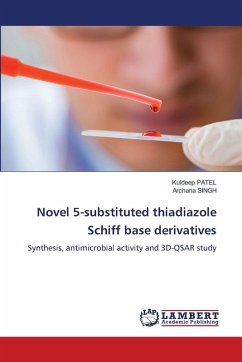
Novel 5-substituted thiadiazole Schiff base derivatives
Synthesis, antimicrobial activity and 3D-QSAR study
Versandkostenfrei!
Versandfertig in 6-10 Tagen
40,99 €
inkl. MwSt.

PAYBACK Punkte
20 °P sammeln!
Antimicrobial agents are among the most commonly used and misused of all drugs. The resistance towards available drugs is rapidly becoming a major worldwide problem. The need to design new compounds to deal with this resistance has become one of the most important areas of research today. According to literature survey, thiadiazole is a versatile moiety that exhibits a wide variety of biological activities. Thiadiazole moiety acts as "hydrogen binding domain" and "two-electron donor system". Many drugs containing thiadiazole nucleus are available in the market such as acetazolamide, methazolam...
Antimicrobial agents are among the most commonly used and misused of all drugs. The resistance towards available drugs is rapidly becoming a major worldwide problem. The need to design new compounds to deal with this resistance has become one of the most important areas of research today. According to literature survey, thiadiazole is a versatile moiety that exhibits a wide variety of biological activities. Thiadiazole moiety acts as "hydrogen binding domain" and "two-electron donor system". Many drugs containing thiadiazole nucleus are available in the market such as acetazolamide, methazolamide, sulfamethazole, etc. 1,3,4-thiadiazole derivatives have received significant attention and have been increasingly investigated due to their diverse range of biological properties. Thiadiazoles exhibit diverse biological activities, possibly due to the presence of = N-C-S moiety. So, keeping the above observation in consideration, thiadiazole derivative were synthesized and evaluated as antimicrobial agents. Thiadiazole derivatives were synthesized and purified by recrystallization. Reactions were monitored by thin layer chromatography using silica gel-GF254 as adsorbent on glass plate.



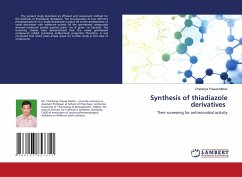
![SYNTHESIS OF BENZO [D] IMIDAZOLE SUBSTITUTED DERIVATIVES Cover SYNTHESIS OF BENZO [D] IMIDAZOLE SUBSTITUTED DERIVATIVES](https://bilder.buecher.de/produkte/64/64183/64183276n.jpg)
